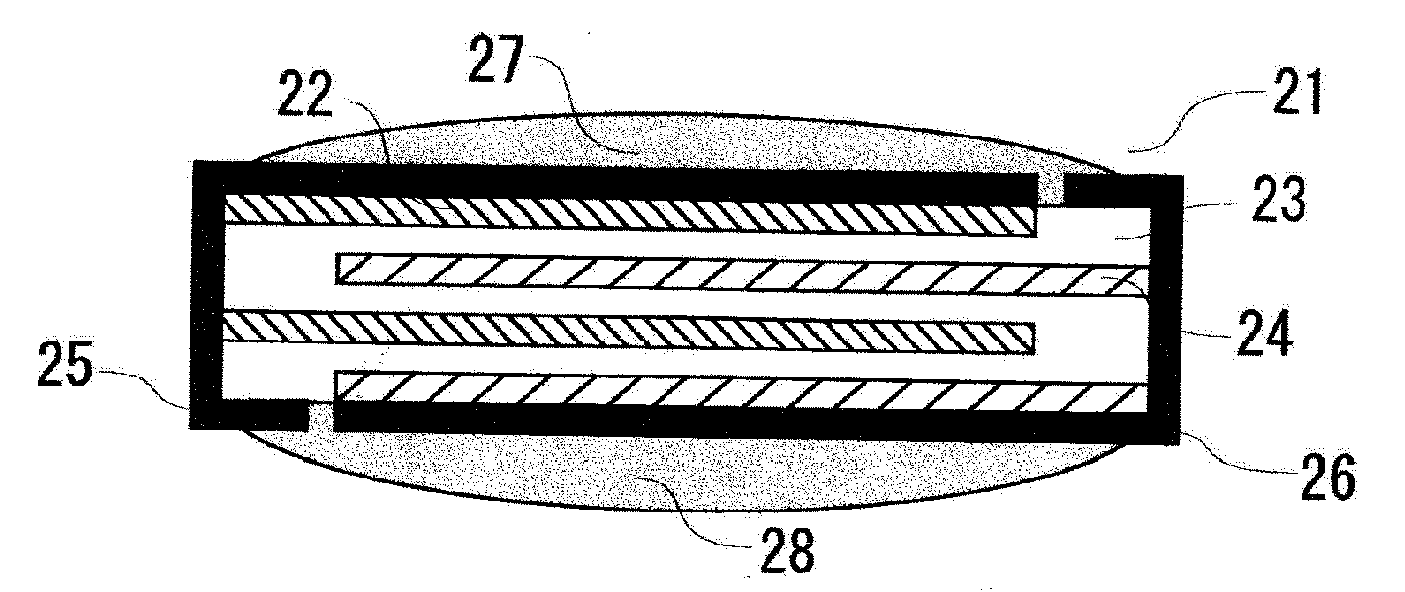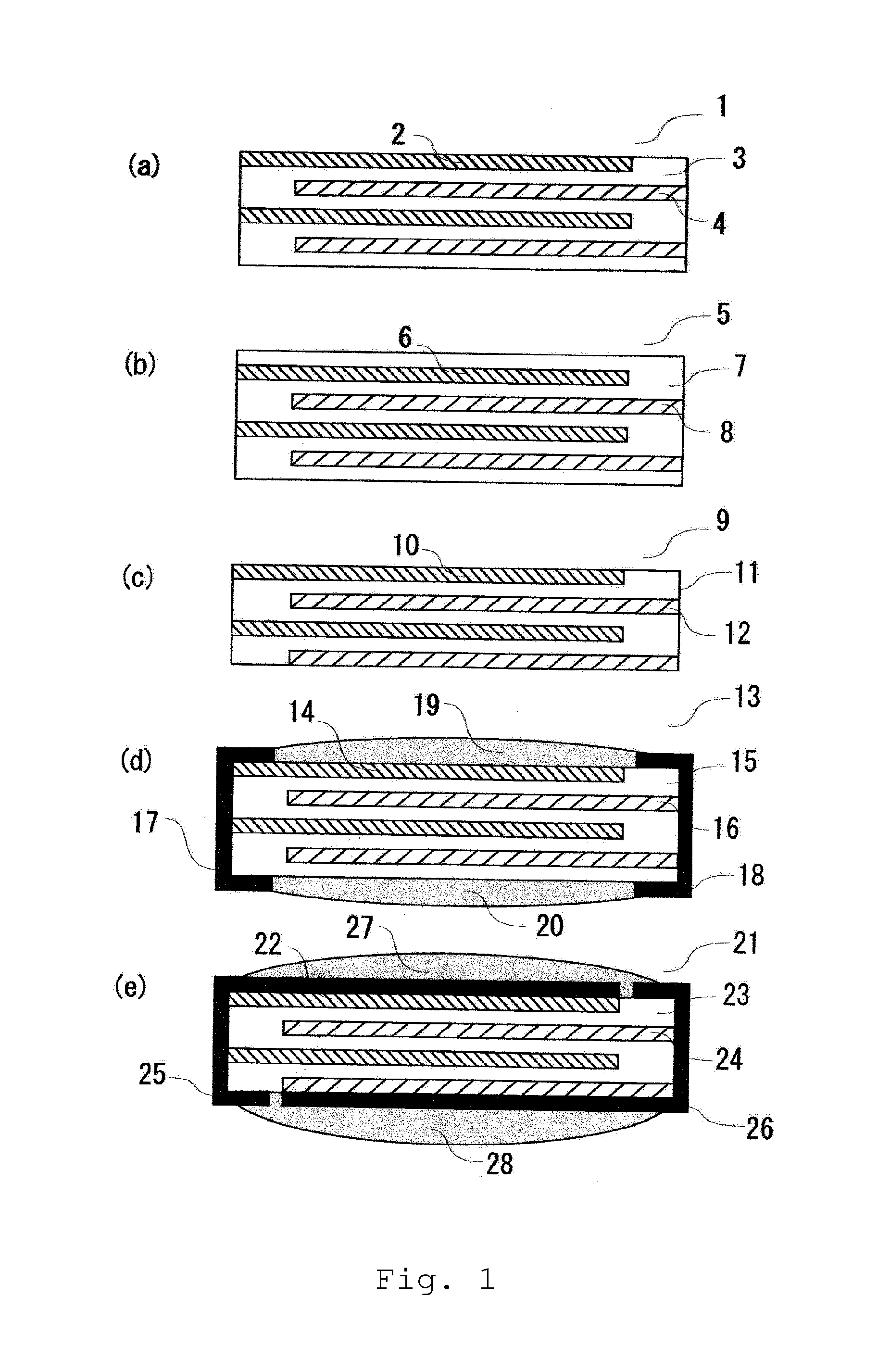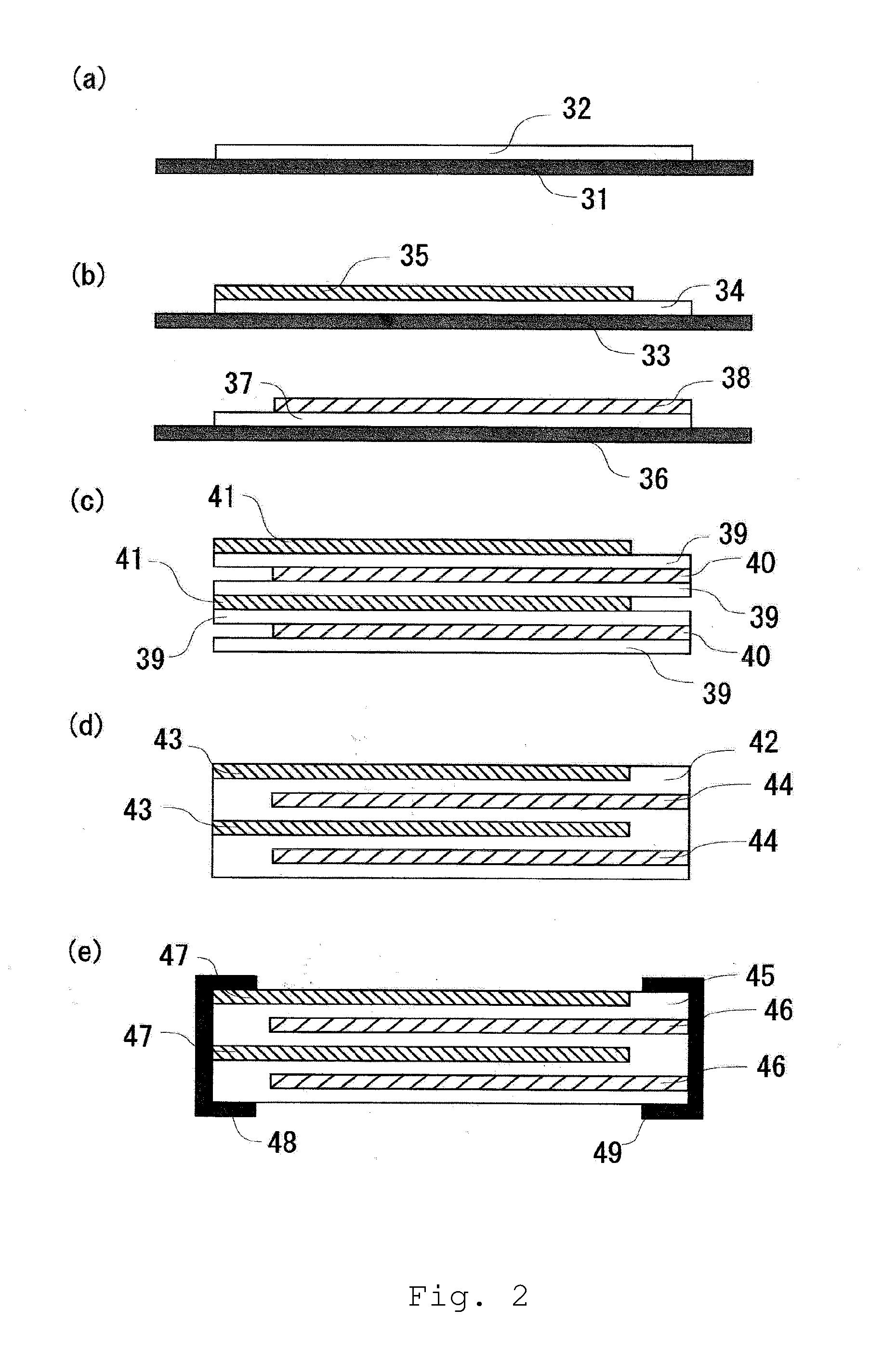Lithium ion secondary battery and method for manufacturing same
a lithium ion battery technology, applied in the direction of secondary cell details, sustainable manufacturing/processing, flat cell grouping, etc., can solve the problems of inability to achieve significant reduction in internal resistance or battery capacity, difficulty in increasing battery capacity, etc., to reduce internal resistance increase the discharge capacity of lithium ion secondary battery, the effect of significant increase of the contact area between the active materials
- Summary
- Abstract
- Description
- Claims
- Application Information
AI Technical Summary
Benefits of technology
Problems solved by technology
Method used
Image
Examples
example 1
(Preparation of Positive Electrode Paste)
[0086]The positive electrode active material used was LiMn2O4 prepared by the method described below.
[0087]Li2CO3 and MnCO3 as starting materials were weighed in a molar ratio of 1:4, wet mixed with water as a solvent in a ball mill for 16 hours, and then dewatered and dried. The resulting powder was calcined in the air at 800° C. for 2 hours. The calcined product was coarsely ground, subjected to wet-mixing with water as a solvent in a ball mill for 16 hours, and then dewatered and dried, so that a positive electrode active material powder was obtained. The powder had an average particle size of 0.30 μm. The composition of the prepared powder was confirmed as LiMn2O4 using an X-ray diffraction meter.
[0088]A positive electrode paste was prepared by premixing Li3.5Si0.5P0.5O4 used as a solid electrolyte and LiMn2O4 used as the positive electrode active material powder in a volume ratio of 10:90 to 90:10, adding 100 parts of the resulting mixtu...
PUM
| Property | Measurement | Unit |
|---|---|---|
| temperature | aaaaa | aaaaa |
| temperature | aaaaa | aaaaa |
| particle size | aaaaa | aaaaa |
Abstract
Description
Claims
Application Information
 Login to View More
Login to View More - R&D
- Intellectual Property
- Life Sciences
- Materials
- Tech Scout
- Unparalleled Data Quality
- Higher Quality Content
- 60% Fewer Hallucinations
Browse by: Latest US Patents, China's latest patents, Technical Efficacy Thesaurus, Application Domain, Technology Topic, Popular Technical Reports.
© 2025 PatSnap. All rights reserved.Legal|Privacy policy|Modern Slavery Act Transparency Statement|Sitemap|About US| Contact US: help@patsnap.com



